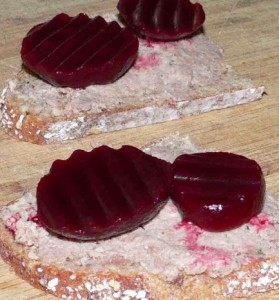When I think Oregon, I tend not to think UK. But these regions are apparently bound by a passion for undercooked chiken liver pate resulting in Campylobacter outbreaks.
Since December 2013, Oregon health officials have been looking into the source of campylobacteriosis that has sickened six individuals in Oregon, Washington and Ohio. All cases report eating undercooked or raw chicken livers; most cases consumed chicken  livers prepared as pâté. The cases in Ohio ate chicken liver pâté while visiting Oregon. The Oregon Health Authority is working with the Washington Department of Health, USDA and CDC.
livers prepared as pâté. The cases in Ohio ate chicken liver pâté while visiting Oregon. The Oregon Health Authority is working with the Washington Department of Health, USDA and CDC.
This is the second reported multistate outbreak of campylobacteriosis associated with consumption of undercooked chicken liver in the United States.
Australia has had its own outbreak.
Chicken livers should be considered a risky food. A recent study found up to 77 percent of chicken livers tested were positive for Campylobacter. Washing chicken livers is not enough; chicken livers can be contaminated on the inside and on the outside, which is why thorough cooking is the only way to kill bacteria in contaminated livers.
(Hint: don’t wash them, you’re just spreading Campylobacter around your kitchen.)
Pâté made with chicken liver is often undercooked to preserve texture. It can be difficult to tell if pâté is cooked thoroughly because livers are often partially cooked then blended with other ingredients and chilled. Pâté prepared at a USDA inspected facility is considered safe to eat because in order to pass inspection the livers must be cooked to a proper temperature.
The 2009 FDA Food Code states that restaurants must inform customers about the risk of eating undercooked food; the warnings are often included at the bottom of restaurant menus.
